What is grape anthracnose and how to treat the disease?
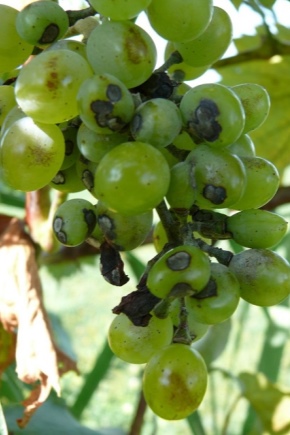
A fungal disease such as anthracnose often infects vineyards, causing the crop to deteriorate and the plant itself may die. Read below about what methods are suitable for combating this ailment.
Description of the disease
Grape anthracnose is a disease caused by several types of fungus. If you translate the name of this fungal scourge from Greek, you get such a phrase as "coal disease". This name is quite logical, as the affected parts of the grapes begin to look as if they are charred.

This disease is common in places with high temperatures, and if high humidity is added to the high temperatures, the fungus begins to actively spread and develop. Hence, the ideal conditions for such a fungus are heat combined with frequent rains.
The incubation period of this fungal disease depends solely on the temperature of the air masses. So, if it is +12 degrees, then the incubation period lasts about 12 days, while at a temperature of +25 degrees, this time decreases to 1 week or less.
Only young areas of grapes are affected by the fungus. These include foliage and petioles about 25 days old, shoots that did not have time to woody, as well as green combs, inflorescences and fruits. However, as it develops, the disease can also affect adult plants.
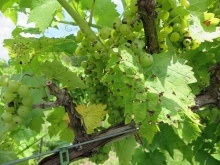
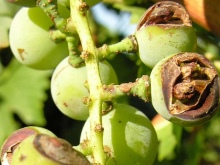
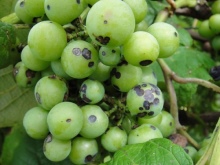
Signs of defeat
Anthracnose is clearly visible on berries, and on bunches, and on grape leaves. Initially, you need to pay attention to the leaves. Brown specks appear on them, around which you can see something like a dark border. In such areas, over time, you will see a hole, which appears due to the fact that plant tissues die off. When a disease is affected on the brushes of the plant, one can notice the presence of brown spots, which actively spread and increase their volume, because of which the living tissue subsequently dries and dies, and the buds begin to fall off.
On the shoots of the plantings, brownish spots that are in the shape of an oval and look like depressed ones will be found. Often on such spots you can see the middle, pinkish with shades of gray, which has a dark border. The tissues in these areas begin to crack, which is why ulcers appear in the future, and the shoots themselves begin to break and dry. Similar signs can be observed on the ridges or cuttings of foliage. On ripe berries, it is also quite possible to see similar symptoms.
Carefully examine each part of the plant in order to make an accurate diagnosis and immediately start treating the disease.
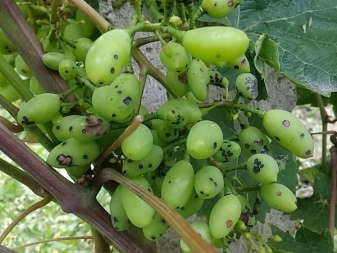
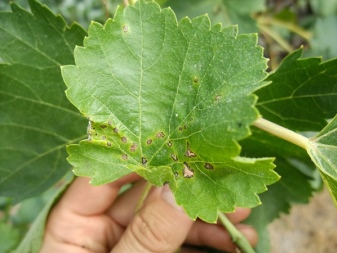
Causes of occurrence
Most often, the main cause of the onset of the disease is the penetration of its pathogen into the foliage or tissue of a vine damaged by something. Over time, infection of healthy parts of the grapes begins. How the further development of events takes place depends solely on weather conditions. Dryness and heat can help prevent the development of fungus, while high temperatures and increased moisture, on the contrary, will only contribute to this.
Another common cause is improper watering. If you part with it and use too much water, then this will surely lead to waterlogging of the soil and an excess of moisture in it, which will only give an impetus to the development of the disease. Artificial sprinkling of grapes, the loss of a large amount of dew that occurs at night on foliage and shoots - all these are reasons that also provide favorable conditions for the spread of the fungus.
Besides, the causes of the onset of the disease can be insufficient soil drainage, frequent rains or hail, as well as long vine growth in thickened plantings.
Excessively dense plantings impede normal air circulation between them, which is why the soil dries slowly, and ideal conditions are created for fungal infection.
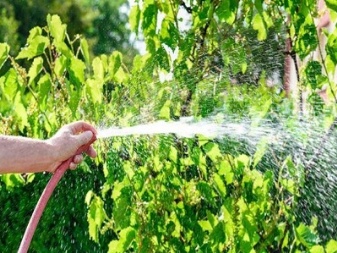
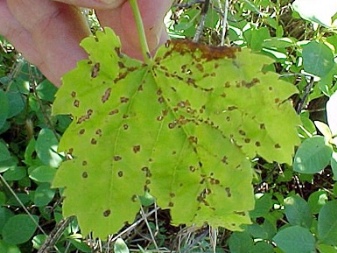
How to treat?
Anthracnose can be treated in different ways.
Chemicals
Basically, summer residents use fungicides as chemicals. These are effective drugs that can fight anthracnose. They can be used to treat both those plants that have become infected quite recently, and those whose disease is already at an advanced stage. Most often, modern summer residents prefer such means as Bordeaux mixture, Kuproksat, Skor, Fitosporin M, Acrobat C and Dnok. Each of these products can be purchased at specialized stores.
In the initial stages of the development of a fungal disease, you can use Bordeaux mixture with a concentration of 1%. If you are going to process the plant for the first time, then pay attention to the fact that young shoots should reach a size of 10 centimeters. After the first treatment, you must wait 2 weeks, after which you can spray the plantings again, lowering the concentration of the drug.
If the disease began to progress in late autumn, then the fight against it should be postponed until spring. With its onset, the plants must be treated with a strong drug, for example, "Fitosporin". It is possible to spray the vine with the agent only after cutting, which was carried out at the time of the detection of the disease - in late autumn. This must be done before the grape buds are dissolved.
It is best to process the plant early in the morning or in the evening. Otherwise, it may get burned.
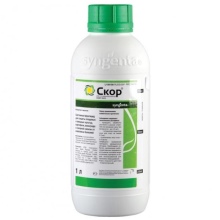

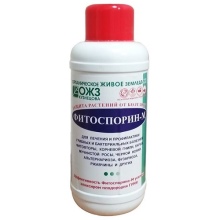
Biological agents
This is another way to fight fungal infections. Preparations of this kind are also highly effective and, unlike chemicals, are completely harmless to both humans and the plant itself and the environment. Among biological agents, the most common are "Mikosan" and "Guapsin".
Each of these preparations has a beneficial effect on grapes. Its taste remains unchanged after application, but the shoots begin to grow somewhat more actively, which allows the plantings to recover from the illness in a short period of time.
Treatment with such drugs must be done every 2 weeks, and you must act strictly according to the instructions. Note that it is necessary to process the plant for the first time only when its shoots grow at least 5 centimeters or more.
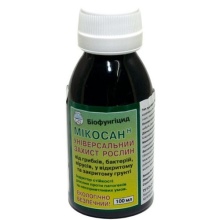
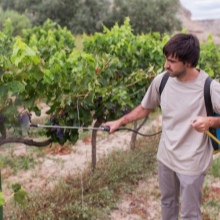

Prevention measures
Compliance with preventive measures is the best protection for your vineyard. Prevention will prevent the onset of the disease, it will also prevent it from spreading too much. Here several effective tricks.
- Take good care of the plant. Check him regularly for illness. If it is found, the affected parts must be cut off and burned in order to get rid of the fungus completely.
- Disinfect gardening tools in special solutions after treating the plants. This will also prevent the spread and occurrence of the disease.
- When planting plants, do not allow them to be excessively dense. Because of this, the earth dries out worse, which allows fungal diseases to develop freely.In addition, try to choose varieties for planting that are highly resistant to this kind of disease.
- You should not allow the growth of grapes. To do this, you need to prune branches and shoots in time, as well as pinch seedlings.
- Provide the plant with nutrients using a variety of fertilizers. This will strengthen your grape and its immune system, which will make the plant more resistant to various diseases.
- Try to avoid waterlogging the soil. Keep track of how much water you supply to the culture.

Resistant varieties
The most resistant to anthracnose are such grape varieties as Riesling, Saperavi, Codryanka, Yasya and Tangra. Please note that planting these plant varieties cannot give you a 100% guarantee that your plantings will not be infected with this fungal disease. But the risk of catching it from them is still somewhat less than from other varieties.
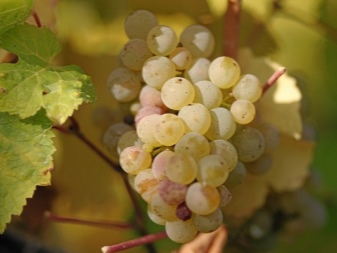

What is grape anthracnose, see the video below.













The comment was sent successfully.